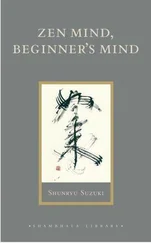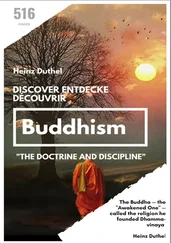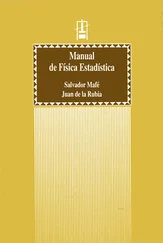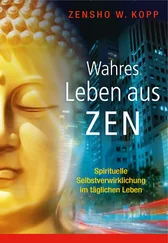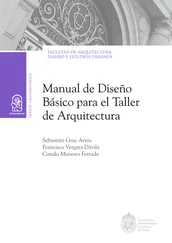Teitaro Suzuki - Manual of Zen Buddhism
Здесь есть возможность читать онлайн «Teitaro Suzuki - Manual of Zen Buddhism» весь текст электронной книги совершенно бесплатно (целиком полную версию без сокращений). В некоторых случаях можно слушать аудио, скачать через торрент в формате fb2 и присутствует краткое содержание. Жанр: Религиоведение, Религия, Руководства, на английском языке. Описание произведения, (предисловие) а так же отзывы посетителей доступны на портале библиотеки ЛибКат.
- Название:Manual of Zen Buddhism
- Автор:
- Жанр:
- Год:неизвестен
- ISBN:нет данных
- Рейтинг книги:3 / 5. Голосов: 1
-
Избранное:Добавить в избранное
- Отзывы:
-
Ваша оценка:
- 60
- 1
- 2
- 3
- 4
- 5
Manual of Zen Buddhism: краткое содержание, описание и аннотация
Предлагаем к чтению аннотацию, описание, краткое содержание или предисловие (зависит от того, что написал сам автор книги «Manual of Zen Buddhism»). Если вы не нашли необходимую информацию о книге — напишите в комментариях, мы постараемся отыскать её.
Manual of Zen Buddhism — читать онлайн бесплатно полную книгу (весь текст) целиком
Ниже представлен текст книги, разбитый по страницам. Система сохранения места последней прочитанной страницы, позволяет с удобством читать онлайн бесплатно книгу «Manual of Zen Buddhism», без необходимости каждый раз заново искать на чём Вы остановились. Поставьте закладку, и сможете в любой момент перейти на страницу, на которой закончили чтение.
Интервал:
Закладка:
On April 8 this baby Buddha standing in a bronze basin is taken out of the shrine, and the ceremony of baptizing the baby with sweet tea made of some vegetable leaves is performed; the tea thus used is afterwards given away to children. Recently, the celebration of this day takes place on a grand scale in all the larger cities of Japan, not only by Zen followers but by all Buddhists including monks, priests, laymen, laywomen, and children.
Sakyamuni as the Enlightened One sits on the lotus throne enshrined in the main hall of the Zen monastery. He is generally in the meditation posture.
The Nirvana scene is generally represented pictorially, except perhaps the one at the Nirvana Hall of Myoshinji, Kyoto, which is a bronze-slab. The most noted Nirvana picture is by Chodensu, of Tofukuji, the whole length of which is about sixteen yards.
II. THE BODHISATTVAS
When Sakyamuni is not found in the Main Buddha Hall, one of the following Bodhisattvas is enshrined in his place: Monju (Manjusri), Fugen (Samantabhadra), Kwan-non (Avalokitesvara), Yakushi (Bhaishajyaguru), Miroku (Maitreya), Jizo (Kshitigarbha), or sometimes Kokuzo (Akasagarbha).
Monju and Fugen generally go in pairs and are the chief Bodhisattvas in the Avatamsaka (Kegon) conception of the world. Monju stands for Prajna. Sitting on a lion he holds a sword which is meant to cut all the intellectual and affectional entanglements in order to reveal the light of transcendental Prajna. Fugen is found on an elephant and presents love, Karuna. Karuna is contrasted with Prajna in that Prajna points to annihilation and to identity whereas Karuna points to construction and to multiplicity. The one is intellectual and the other emotional; the one unifies and the other diversifies. Fugen's ten vows are well known to students of the Kegon.
Kwannon is exclusively the Bodhisattva of compassion. In this respect he resembles Fugen. A special chapter is devoted to him in the Hokkekyo ( Saddharma-pundarika ) and so in the Ryogonkyo ( Suramgama ). He is one of the most popular Bosatsus or Bodhisattvas of Mahayana Buddhism. For an English translation of the Kwannongyo as rendered into Chinese by Kumarajiva see this page.
Yakushi is the Bodhisattva-doctor. He holds a medicine jar in his hands and is attended by twelve gods each of whom presents one of his twelve vows. The main object of his appearance among us is to cure us of ignorance, which is the most fundamental of all the ills the flesh is heir to.
Jizo is principally or popularly the protector of children nowadays, but his original vows are to save us from wandering in the six paths of existence. He thus divides himself into six forms each of which stands as guardian in each one of the six paths. Hence the six Jizo we often find by the country roadside. He is generally represented in priestly robe, with a shaven head, and carries a long walking staff in his hand. In the Kamakura and the Ashikaga period he was quite a popular object of worship, and we find many fine artistic sculptures of this Bodhisattva in Kamakura.
Miroku is the future Buddha and at present has his abode in the Tushita Heaven waiting for his time to appear among us. He is also essentially compassionate as his name implies. He is sometimes called a Buddha and sometimes a Bodhisattva. Although he is supposed to be in one of the heavens, he is frequently encountered on earth.
III. THE ARHATS
The Arhats, generally sixteen in number, are enshrined in the second storey of the tower gate. They are all registered as dwellers in some remote mountains, and each is the leader of a large following. Their superficially grotesque and irregular appearances contrast in a strange way with those of the Bodhisattvas. They are miracle workers and tamers of the wild beasts. This characteristic seems to have excited the interest of the Zen monk-artist who has turned them into one of the favourite objects of his artistic imagination.
In a large Zen monastery the five hundred Arhats are given a special shelter in the premises.
Bhadrapala is one of the sixteen Arhats and had his satori while bathing. He is now enshrined in a niche in the bath-room attached to the Meditation Hall. When the monks take their bath, they pay respect to his figure. [1]The picture shown below belongs to Engakuji, Kamakura, and is one of the national treasures of Japan.
IV. THE PROTECTING GODS
Of the many protecting gods of Buddhism the following may be counted as belonging more or less exclusively to Zen, and they have each his or her own special quarter where they perform their several official duties for Buddhism.
The Niwo or “two guardian kings” are found enclosed at either side of the entrance gate. They represent the Vajra god in two forms; the one is masculine with the mouth tightly closed, and the other is feminine with an opened mouth. They guard the holy place from intruders.
The Shitenno or the four guardian gods are enshrined in the Buddha-hall at the four corners of the altar. Of these gods the most popular one is Tamonten (Vaisravana), the guardian of the North. This fact comes perhaps from his being the god of learning and also of wealth.
It is difficult to trace historically how Benzaiten (Sarasvati), who is the goddess of the River, finds her shrine in a Zen monastery. Some say that Benzaiten is not Sarasvati but Sridevi. Whoever she may be, a female form is often found among the audience of a saintly priest, and later she appears in his dream telling him how she who was formerly an enemy of Buddhism is now enlightened and will be one of its protectors, and so on. In any event there is room even in the Zen monastery, where the severest kind of asceticism is supposed to prevail, for a goddess to enter.
Idaten is a god of the kitchen looking after the provisions of the Brotherhood. The original Sanskrit term for it seems to be Skanda and not Veda as may be suggested from i-da or wei-t'o . He is one of the eight generals belonging to Virudhaka, the guardian god of the Southern quarter. He is a great runner and wherever there is a trouble he is instantly found there. In the Chinese monastery he occupies an important seat in the hall of the four guardian gods, but in the Japanese he is in the little shrine attached to the monks' dining-room. [1]
Ususama Myowo is a god of the lavatory. Ucchushma in Sanskrit means “to dry”, “to parch”, that is, to clean up filth by burning, by fire, for fire is a great purifying agency. Myowo is Vidyaraja, a special class of the gods who assume a form of wrath. [2]
Sambo Kojin seems to be a Japanese mountain god in the form of an Indian god. He is found outside the temple buildings. As the monasteries are generally located in the mountains this god who is supposed to preside over such districts, is invited to have his residence in the grounds so that he would be a good protector of the Brotherhood against the inimical influence of evil spirits.
Daikokuten whose Indian prototype is sometimes regarded as Mahakala is at present a purely Japanese god. He carries a large bag over his shoulder and stands on rice bales. Though his phallic origin is suspected, he has nothing, as he is, to do with it. He is a god of material wealth and like Idaten looks after the physical welfare of the Brotherhood. He is not such a universal object of respect in the Zen monastery.
Wherever the Prajnaparamita is preached or copied or recited, the sixteen “good gods” stand about the place and guard the devoted spirits against their being lured away by the enemy. As Zen is connected with the philosophy of Prajna they are also the gods of Zen. The picture below shows more than sixteen figures. Of the extra four personages standing in the foreground the two on the left are the Jotai Bosatsu (Sadaprarudita) and Jinsha Daio while the two on the right are Hsuan-Chuang with a kind of carrying-case on his back and Hoyu Bosatsu (Dharmodgata). Jotai and Hoyu are the principal characters in the Prajnaparamita as told in the second series of my Essays in Zen Buddhism. Hsuan-chuang is the translator of the Mahaprajnaparamita Sutra in six hundred fascicles and also that of Nagarjuna's commentary on the sutra in one hundred fascicles. While he was travelling through the desert, he was accosted by Jinsha, the god of the wilderness, who was responsible for the unsuccessful trips repeatedly attempted by the devoted Chinese pilgrims to India prior to Hsuan-chuang. The god was carrying six of the skulls of such victims about his neck. Listening to the Prajnaparamita as recited by Hsuan-chuang, he was converted and became a most devoted protector of the holy text. Hence his presence here.
Читать дальшеИнтервал:
Закладка:
Похожие книги на «Manual of Zen Buddhism»
Представляем Вашему вниманию похожие книги на «Manual of Zen Buddhism» списком для выбора. Мы отобрали схожую по названию и смыслу литературу в надежде предоставить читателям больше вариантов отыскать новые, интересные, ещё непрочитанные произведения.
Обсуждение, отзывы о книге «Manual of Zen Buddhism» и просто собственные мнения читателей. Оставьте ваши комментарии, напишите, что Вы думаете о произведении, его смысле или главных героях. Укажите что конкретно понравилось, а что нет, и почему Вы так считаете.

